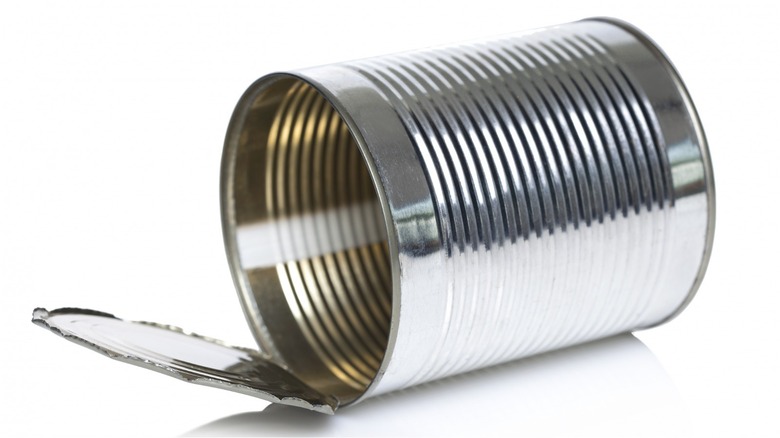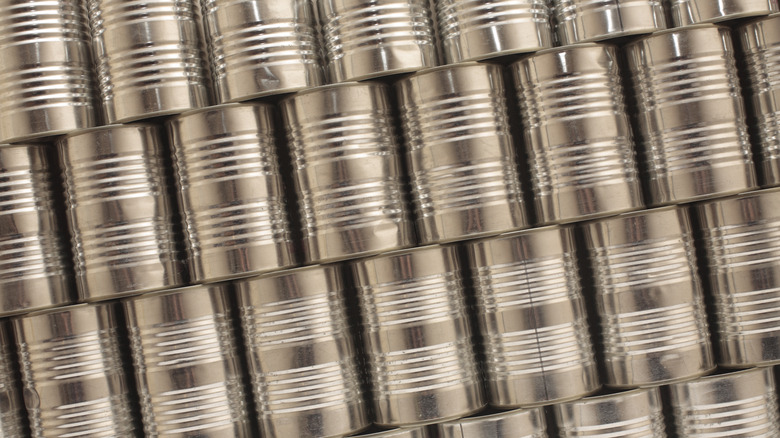The Sturdy Reason Some Canned Goods Are Ribbed
At first glance, you may think that all canned foods are created equal, as far as their containers are concerned. However, once you peel off the label you will quickly see that there is a lot more that goes into the making of a seemingly simple can. For instance, if you stand a regular coffee tin beside that of a can of beans, you will see that the smooth aluminum surface of the coffee can doesn't have the same ribbing along the middle as the bean can. This wavy difference is no mistake; it has everything to do with strengthening the stability of the can.
For example, a soda can is made of a thin, smooth, aluminum material that can be easily dented if held tightly or dropped on the ground — in fact, the latter scenario could cause the can to burst. However, certain sauce, fruit, vegetable, and soup tins are designed specifically with horizontal ridges along the middle to help make the can sturdier. To explain this packaging technique in relation to the design of corrugated cardboard: The zig-zagged cardboard that lines the inside of most box packages is made to increase the strength of the box while also creating air pockets to keep the overall packaging light. Likewise, the ridges on food cans help to protect the tins from normal bumping around, especially during transportation from the manufacturer to their destination. Let's see how these ribbed features further help to increase the integrity of your canned goods.
Ridges on food cans help in more ways than one
The ribbed feature on many canned food items helps the can stand up to regular bumping, dropping, and the rigors of transportation; it also maintains the cans' shape when they are stored at a storage facility or grocery store. However, this is not the only way that these little ridges help keep cans intact. During the manufacturing and canning process of some canned goods, they can be placed under extreme temperatures. This can be due to the sterilization of the cans themselves, as well as hot contents placed inside the container. The ribs that run horizontally across the middle of the can work to expand and contract to allow leeway for these temperature shifts without damaging or warping the can in the process.
This clever design also aids the foundation of the canned goods as it experiences temperature changes throughout the delivery and storage process. This handy feature ensures that the integrity of the can stays uniform as it goes through the early stages of canning until it makes its way into your home. This ribbed feature can limit the waste involved in returning dented or damaged containers as well. You may notice that not all canned goods have this design, and that is due to the contents themselves. Some soda cans or even smaller seafood containers don't go through the same temperature fluctuations as other food items; therefore, they don't require this added feature to keep them protected.

